| Problems in Identification: Aberrants, Dimorphics, Melanics
and Seasonal Forms |
|
- Aberration is a formal term given to non-typical variation
and implies "error in natural pattern or coloration."
- Dimorphic means "two morphs or forms," and often, but not
always, refers to males and females being different (sexual dimorphism).
- Melanism refers to partial or full replacement of normal
coloration by dark gray or black.
- Seasonal Forms represent a type of dimorphism where early and
late broods are differently colored or patterned.
|
| Aberrations: Joyful Holomelina Moth -- Holomelina
laeta |
In addition to offering
examples of aberrations this species is sexually dimorphic.
|
|
|
| Dimorphism -- Neither Seasonal nor Sexual |
Some dimorphic forms are recognized with formal
names. The second photo of P. cymatophoroides is form 'expultrix'.
|
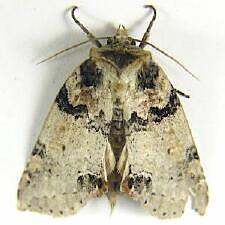 |
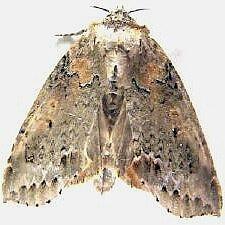 |
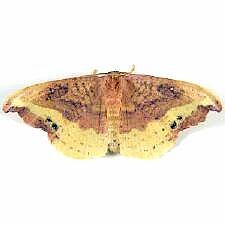 |
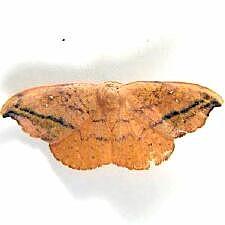 |
Tufted Thyatirid
Moth -- Pseudothyatira cymatophorides
© Robert Patterson - MD
|
Rose Hooktip
Moth -- Oreta rosea
© Robert Patterson - MD
| |
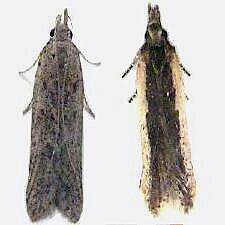 |
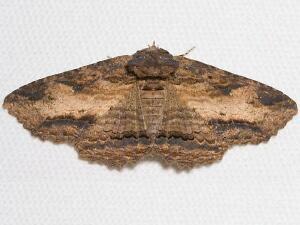 |
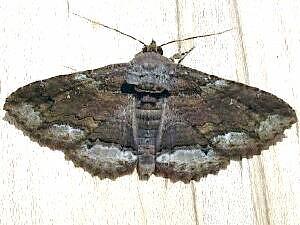 |
Palmerworm M. - Dichomeris
ligulella
© Robert Patterson - MD
|
Lunate Zale Moth -- Zale
lunata
© Troy Barlett - GA
|
Lunate Zale Moth -- form
'edusa'
© Machele White - FL
| |
| Dimorphism -- Sexually Distinctive Species |
Sexes differ visibly in numerous species. In some
only the antennae differ, males having more feathery ones.
|
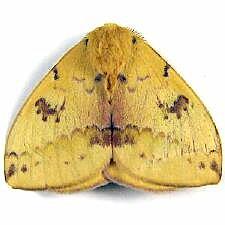 |
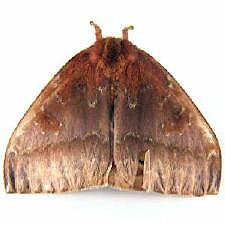 |
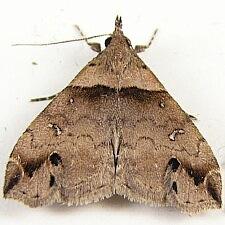 |
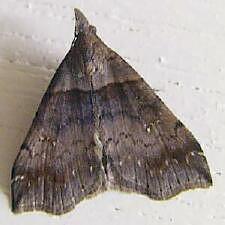 |
male -- Io Moth
-- Automeris io -- female
© Robert Patterson - MD
|
male --
Ambiguous Moth -- Lascoria ambigualis -- female
© Robert
Patterson - MD
|
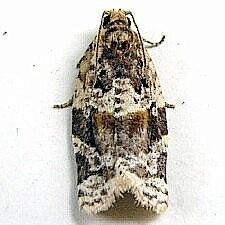 |
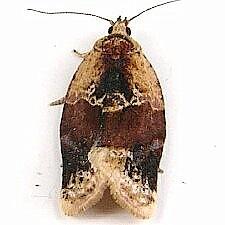 |
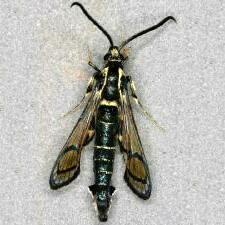 |
 |
male --
Red-banded Leafroller Moth -- Argyrotaenia velutinana -- female
© Robert Patterson - MD
|
male --
Peachtree Borer Moth -- Synanthedon exitiosa -- female
© Patrick
Coin -- NC
© Richard Leung - VA
| |
| Melanism |
Melanism can be partial or complete, melanics
being darker than the norm. In some cases, as in the Hypagyrtis below,
it is difficult to decide whether an unusual specimen is an
aberration, melanic, or simply an extreme variation. Members of the
genus Hypagyrtis are sometimes collectively called "Hypagyrtis
Variants." There is a great deal of variation within species and
overlap between species. Many specimens cannot be identified to
species without genitalic examination.
|
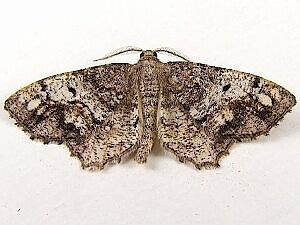 One-spotted
Variant Moth - Hypagyrtis unipunctata One-spotted
Variant Moth - Hypagyrtis unipunctata
© Robert Patterson - MD
|
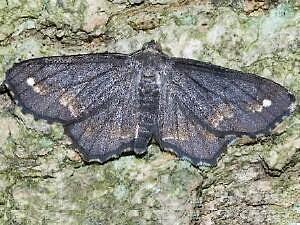 Melanic-Aberrant
Hypagyrtis unipunctata ?? Melanic-Aberrant
Hypagyrtis unipunctata ??
© Jane and John Balaban - IL
|
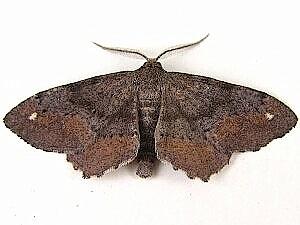 Esther Moth -
Hypagyrtis esther Esther Moth -
Hypagyrtis esther
© Robert Patterson - MD
| |
Half-wing melanics are not rare in my yard, probably
running to 10% of all P. titea that I see. The melanic Major Sallow
came from my yard. It's the only member of the species that I have
seen thus far. In the south this moth is green with well-defined black
markings. Melanics are seen with increasing frequency to the
northward, and Tony Thomas tells me he has seen nothing but melanics
in New Brunswick. They are not totally black, but they don't show much
if any green coloration.
|
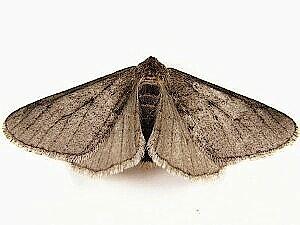 The Half-wing
Moth - Phigalia titea The Half-wing
Moth - Phigalia titea
© Robert Patterson - MD
|
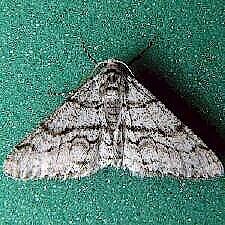 The Half-wing Moth -
typical The Half-wing Moth -
typical
© Robert Patterson - MD |
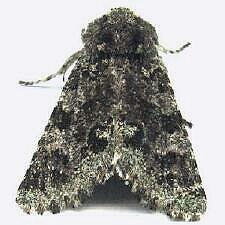 Major Sallow Moth -
Feralia major Major Sallow Moth -
Feralia major
© Larry Line - MD
| |
| Seasonal Forms |
|
|
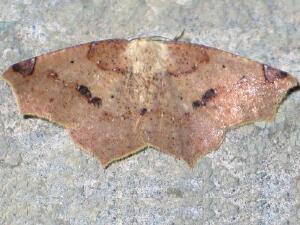 Variable Antepione
Moth -- Antepione thisoaria Variable Antepione
Moth -- Antepione thisoaria
Spring form -- © Robin McLeod - ON
|
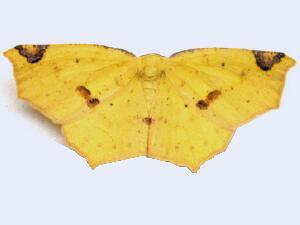 Variable Antepione
Moth -- Antepione thisoaria Variable Antepione
Moth -- Antepione thisoaria
male Summer form -- © Larry Line -
MD
|
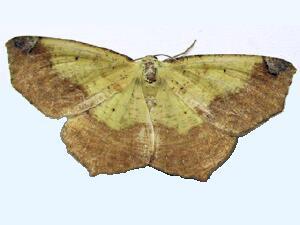 Variable Antepione
Moth -- Antepione thisoaria Variable Antepione
Moth -- Antepione thisoaria
female Summer form -- © Larry Line -
MD
| |
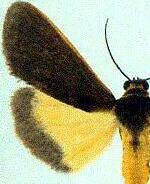 typical male
typical male 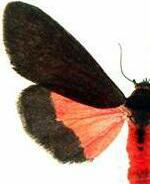 typical female
typical female 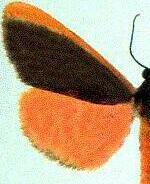 aberration 1
aberration 1  aberration 2
aberration 2 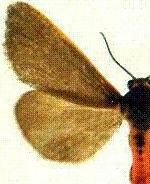 aberration 3
aberration 3 














 One-spotted
Variant Moth - Hypagyrtis unipunctata
One-spotted
Variant Moth - Hypagyrtis unipunctata  Melanic-Aberrant
Hypagyrtis unipunctata ??
Melanic-Aberrant
Hypagyrtis unipunctata ??  Esther Moth -
Hypagyrtis esther
Esther Moth -
Hypagyrtis esther  The Half-wing
Moth - Phigalia titea
The Half-wing
Moth - Phigalia titea  The Half-wing Moth -
typical
The Half-wing Moth -
typical  Major Sallow Moth -
Feralia major
Major Sallow Moth -
Feralia major 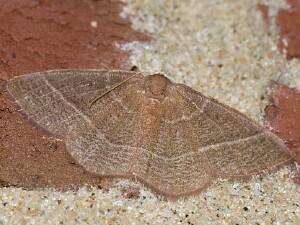 Red-fringed Emerald
Moth -- Nemoria bistriaria
Red-fringed Emerald
Moth -- Nemoria bistriaria 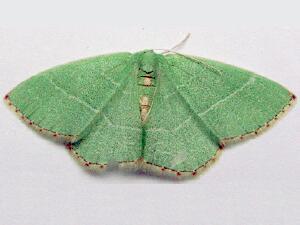 Red-fringed Emerald
Moth -- Nemoria bistriaria
Red-fringed Emerald
Moth -- Nemoria bistriaria  Variable Antepione
Moth -- Antepione thisoaria
Variable Antepione
Moth -- Antepione thisoaria  Variable Antepione
Moth -- Antepione thisoaria
Variable Antepione
Moth -- Antepione thisoaria  Variable Antepione
Moth -- Antepione thisoaria
Variable Antepione
Moth -- Antepione thisoaria